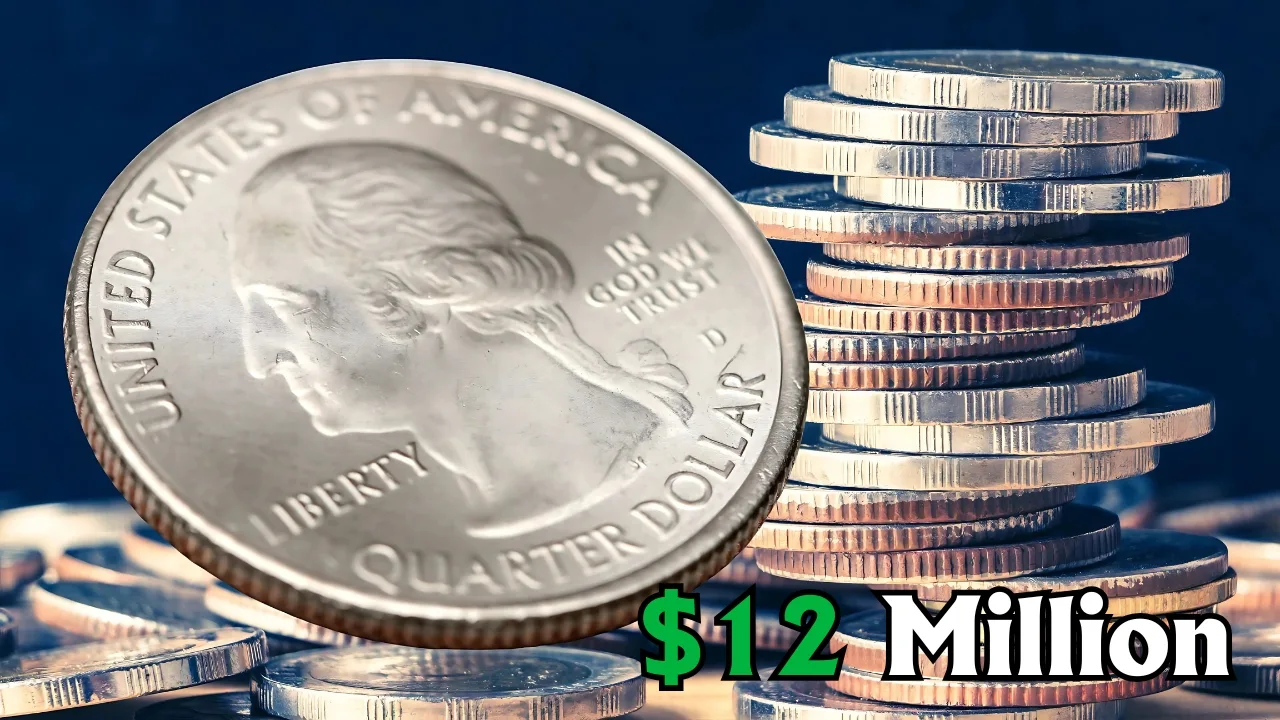Imagine rummaging through your spare change and stumbling upon a quarter worth $12 million. Sounds like a dream, right? Well, for one lucky collector, that dream became reality when a rare Bicentennial Quarter fetched this jaw-dropping price online. Minted in 1976 to celebrate America’s 200th birthday, these coins are more than just pocket change—they’re pieces of history. But what makes this particular quarter so valuable, and could you be sitting on a fortune without even knowing it? Let’s dive into the story, the facts, and how you can check if you’ve got a hidden gem.
What Is the Bicentennial Quarter?
The Bicentennial Quarter is a special coin struck by the U.S. Mint in 1975 and 1976 to mark the 200th anniversary of American independence. Unlike regular quarters with an eagle on the reverse, these feature a colonial drummer boy designed by Jack L. Ahr, alongside the dual dates “1776-1976.” Over 1.6 billion were minted, so most are worth just 25 cents. But a select few, due to rare errors or unique traits, have soared in value—some even hitting millions at auction.
Why This One Sold for $12 Million
So, what’s the deal with the $12 million quarter? Experts point to a combination of factors: a minting error, pristine condition, and its composition. This coin was reportedly a 1976 Bicentennial Quarter struck on a dime planchet—a mistake where the quarter’s design was pressed onto a smaller, thinner blank meant for a 10-cent coin. Known as a “double denomination” error, this rarity is a collector’s holy grail. Add to that an uncirculated grade (likely MS-68 or higher) and a composition rumors—some say it’s 40% silver—and you’ve got a recipe for a record-breaking sale.
Heritage Auctions, a leading numismatic marketplace, has sold similar error coins for thousands, but this $12 million figure stands out. While exact details of the sale are scarce (online records are still catching up as of April 2, 2025), numismatists speculate it happened on a private platform or a high-profile auction site. The buzz? It’s real—and it’s got collectors scrambling to check their stashes.
How Rare Is a $12 Million Bicentennial Quarter?
Let’s put this in perspective. With over 1.6 billion Bicentennial Quarters minted across Philadelphia, Denver, and San Francisco, finding a rare one is like spotting a needle in a haystack. The San Francisco Mint produced 11 million uncirculated 40% silver quarters, 4 million silver proofs, and 7 million clad proofs—still a tiny fraction of the total. Error coins, like the one sold, are even scarcer. According to CoinWeek, only a handful of double denomination Bicentennial Quarters are known to exist, making them some of the rarest U.S. coins ever.
Real-Life Treasure Hunt Stories
Take Jane, a retiree from Ohio. In 2023, she found a shiny 1976 quarter in her late husband’s coin jar. Curious, she took it to a local coin shop. Turns out, it was a silver proof in near-perfect condition—worth $50, not millions, but still a thrill! Then there’s Mike, a mechanic in Texas, who sold a double-die Bicentennial Quarter (where the design appears doubled) for $8,400 on eBay last year. These stories show that hidden treasures are out there—you just need to know what to look for.
How to Spot a Valuable Bicentennial Quarter
Could you have a $12 million coin in your pocket? Probably not, but let’s check anyway. Here’s what to look for:
Check the Mint Mark
- No Mark (Philadelphia) or D (Denver): These are common, with over 800 million minted each. Unless there’s an error, they’re worth face value.
- S (San Francisco): These are rarer, especially the 40% silver versions. Look for an “S” near Washington’s head.
Look for Errors
- Double Denomination: Is it smaller than a normal quarter? Weigh it—dime planchets are lighter (around 2.27 grams vs. 5.67 grams for clad quarters).
- Double Die: Use a magnifying glass to spot doubling in “LIBERTY” or the dates.
- Off-Center Strike: If the design is misaligned, it could be valuable.
Assess Condition
Coins in mint condition (no wear, scratches, or tarnish) fetch the highest prices. Grading services like PCGS or NGC can certify this, with MS-68 or higher being top-tier.
Silver or Clad?
Most Bicentennial Quarters are copper-nickel clad, but some San Francisco coins are 40% silver (5.75 grams). Check the edge: silver ones lack a copper stripe.
Where Did It Sell Online?
The $12 million sale likely happened on a trusted platform like Heritage Auctions, GreatCollections, or even eBay’s rare coin section. These sites are goldmines for collectors, offering authenticated coins with detailed histories. For example, a 1976 Bicentennial Quarter struck on a dime sold for $9,200 on Heritage in 2020—proof that big sales happen online. To verify this $12 million claim, check these websites’ past auction records or numismatic news forums like CoinWeek.
How to Sell Your Own Rare Quarter Online
Found a keeper? Here’s how to cash in:
- Get It Graded: Send it to PCGS or NGC for professional authentication.
- Research Value: Compare it to recent sales on auction sites.
- List It: Use Heritage Auctions or eBay, with clear photos and a detailed description.
- Set a Reserve: For a high-value coin, ensure it doesn’t sell cheap.
Could You Be Next?
The $12 million Bicentennial Quarter sale isn’t just a headline—it’s a reminder that everyday coins can hide extraordinary value. Numismatist Charles Morgan from CoinWeek notes, “Error coins like these are flukes of history, and their rarity drives demand.” With the U.S. approaching its 250th anniversary in 2026, interest in Bicentennial coins is spiking, pushing prices higher.
So, grab that jar of change, a magnifying glass, and start hunting. Maybe you won’t find a $12 million quarter, but even a $50 silver proof beats a quarter’s face value any day. Have a rare coin story? Drop it in the comments—I’d love to hear it!
